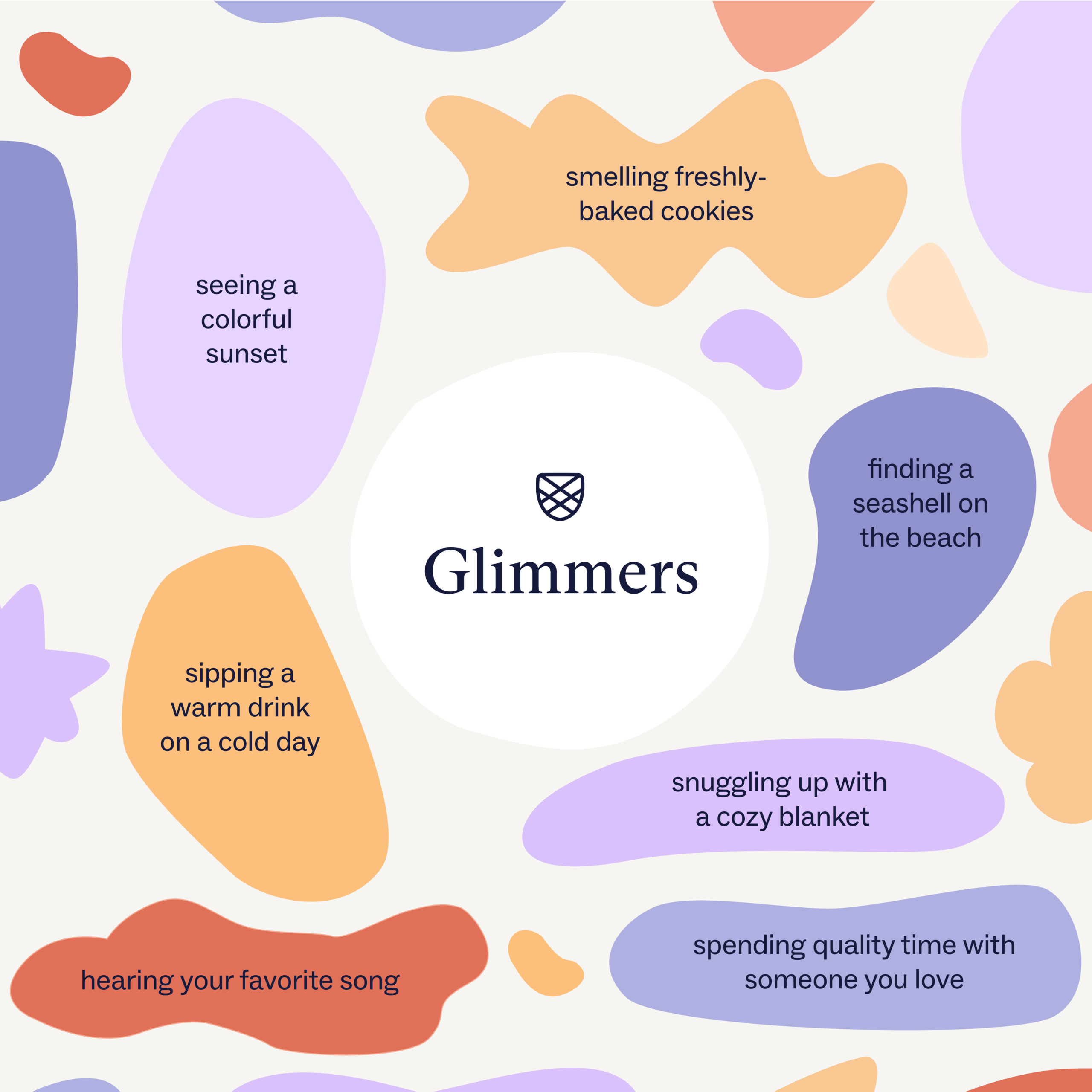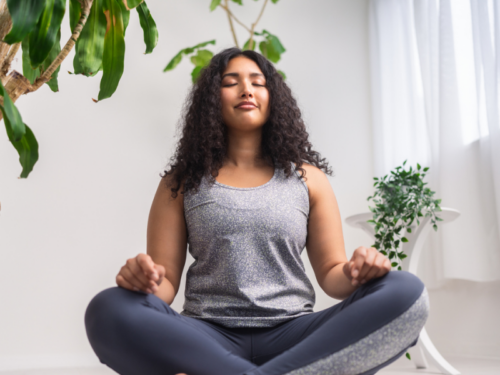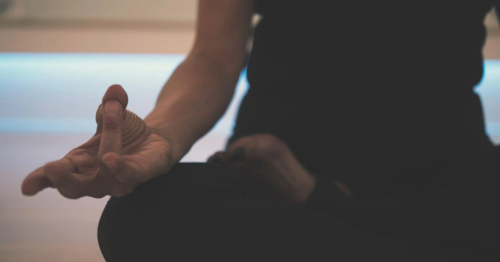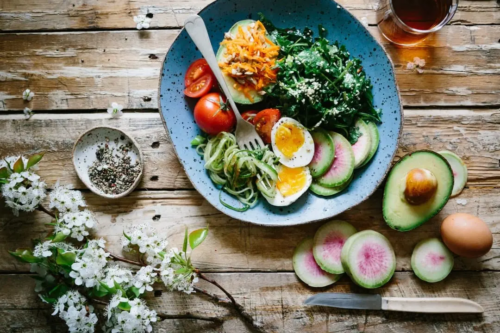
Table of Contents
Glimmers: What They Are and How They Benefit Your Mental Health

Written By: Ashley Laderer

Clinically Reviewed By: Dr. Don Gasparini
October 4, 2023
8 min.
Let’s hear it for the little things. Learn more about glimmers –– small everyday moments that make you feel good and help your nervous system feel safe.
Learn more about our Clinical Review Process
Table of Contents
Sometimes, it’s the little things that make a big difference. Nothing is too small to bring some joy or peace into your day. Think about how you feel when you see an adorable puppy on your morning walk, when you take that first delicious sip of your morning coffee, or when you unexpectedly hear your favorite song while grocery shopping.
Enter Glimmers: small everyday moments like these that have the power to make you feel good and remind you of the beauty and pleasure in the simple things.
Here’s what you need to know about glimmers –– including insight from the expert who coined the term –– and how to make the most of them.

What are glimmers?
Put simply, glimmers are “tiny moments of goodness that are all around us,” says licensed clinical social worker Deb Dana, an expert in complex trauma and the nervous system. In fact, Dana officially coined the term “glimmers” herself in her 2018 book Polyvagal Theory in Therapy.
Glimmers are the small, often fleeting, positive moments that brighten our day. So, what happens when you feel a glimmer? Not only do they bring a smile to your face, but they also can help your nervous system relax, Dana says. “Glimmers are tiny micro-moments of what we call ventral regulation –– when your nervous system is in a regulated state that allows you to feel okay, in any flavor of that –– joy, magic, ease, calm, or happy,” she explained. Basically, glimmers can serve as cues for your nervous system to relax, and regulating your nervous system helps you feel safe enough to be in the present moment. And, it’s a self-perpetuating cycle: In this state of safety, you’re more likely to notice even more glimmers.
Anything can be a glimmer. It all depends on the individual. Ask yourself, what are some little things you’ve seen today that made you feel happy, warm, fuzzy, or safe? Remember, it’s all about the little things and the small moments.
Why you should find glimmers
You can think of glimmers as the opposite of triggers. A trigger is something negative –– a situation or stressor that evokes a strong emotional or physiological response, usually resulting in anxiety, fear, or sadness. A trigger can cause someone’s nervous system to enter a fight-or-flight state. Ultimately, triggers make you feel unsafe. On the flip side, glimmers are positive things that can help your nervous system feel at least a bit more safe.
Glimmers are little things that make us feel good, but the concept is not to be confused with toxic positivity, explains Dana. You aren’t pretending that the not-so-good stuff doesn’t exist when glimmers arise. Rather, it’s about allowing space for all aspects of your experience.
“Glimmers do not negate any of the trauma or challenges that we have in our lives. Glimmers don’t erase triggers,” said Dana. “But we also have to notice the glimmers in order to come into a place of not just surviving or resolving the triggers, but really fully thriving and embracing the fact that there are these good moments, as well.”
Dana explains that when you are working through trauma (or other difficult mental health challenges), it’s easy to get “hijacked” and feel triggered like you’re reliving the trauma. By finding glimmers and helping your nervous system feel safer, you have an anchor to help you feel more regulated, she explained.

Plus, glimmers often result in a chain reaction. You might find that once you begin to notice glimmers, more and more will come your way. “The nervous system reaches out and goes, ‘Oh, that felt good. Let’s see if there are any more around,’” said Dana. “It’s not simply one micro-moment in time, but it’s micro-moments that then begin to add up. You’ll find that you have more access to feeling safe, connected, and regulated, and you’ll be able to reach for that a little bit easier.”
And if you’re wondering who can benefit from glimmers –– the answer is literally anyone. We could all use a little bit more feelings of safety and positivity as we go throughout our lives, right? However, as Dana mentioned, glimmers can be especially helpful for trauma survivors, including those dealing with complex trauma, who are trying to regulate their nervous system and heal. Glimmers can also provide hope for people with depression since people with this mood disorder tend to focus on the negative, and glimmers can be tiny beacons of light in the darkness.
How to find more glimmers in your life
Glimmers are everywhere. You just have to look for them. Here are a few tips for finding more glimmers every day.
Set an intention
Dana suggests setting an intention that feels like an invitation rather than a demand. For example, rather than saying to yourself, “I need to find five glimmers today,” which feels like a demand, say, “I’m going to see what glimmers appear on my path today,” which feels more like an invitation. You can set this intention in the morning or before you go out somewhere where you’d like to be on the lookout for glimmers.
Identify glimmer environments
Think about your favorite places to go. Bonus points if they’re in nature. Dana says glimmer environments are places you can go where you’re pretty much guaranteed to see some glimmers. For example, this could be the beach, the forest, or the woods.
Put your phone down
When we spend our time looking down at our phone screens, we miss out on everything happening around us. For example, if you’re on a walk but scrolling social media the whole time, you might miss a small glimmer –– a passerby smiling at you, the smell of the flowers in a neighbor’s garden, or simply how amazing the sun feels on your skin when it finally comes out from behind a cloud. You’re bound to discover beautiful micro-moments when you’re in the present moment and looking around you.
Think about all your senses
Glimmers aren’t only just things you can see. They can be related to any of your senses. Dana suggests asking yourself, “How do you want to be open to noticing?” Think about all five of your senses, and pay attention to them. You never know what little thing might pop up when you drop into the present moment and take in your surroundings.
You can also think about your five senses. A glimmer can be something you see, like a beautiful bird flying past your window, something you smell, like your favorite candle, or something you hear, like the purr of your cat sitting in your lap.

How to make the most of glimmers
Even just noticing a few glimmers throughout your day can make a difference. However, if you want to take things up a notch, there are some things you can do to make the most of these wonderful micro-moments throughout the day.
Keep a glimmer journal
Dana suggests keeping a journal listing your glimmers since this can help “anchor it in.” You may choose to write a daily glimmer list, taking the time at the end of the day to journal and remember the small moments of goodness you noticed all day. Or, you can add to the daily glimmer list as you notice them.
Have a glimmer buddy or group
If you have a friend who is also working on their well-being and personal growth, this is a perfect opportunity to become glimmer buddies. Dana says you can text your buddy something as simple as a single emoji (she likes to send the shooting star emoji) to let them know you’ve seen a glimmer. These messages can act as cues, inspiring them to be on the lookout for their own glimmers.
Or, Dana says, you can also form a glimmer group where you share on a slightly larger scale. Whether you are meeting up to hang out in person or simply sharing your tiny moment in a glimmer group chat, you and your friends will reap the benefits. “You share it, and then you relive it, and the person you’re sharing it with gets to feel it too,” said Dana.
Join the Charlie Health Library
Get mental health updates, research, insights, and resources directly to your inbox.
You can unsubscribe anytime.
Take a photo
Take a picture. It’ll last longer. If the glimmer moment is visual, Dana says you can mark the moment by taking a picture to look at later. Have the intention of taking the photo to evoke those good feelings again when you view the photo at another time, versus taking the photo to post it immediately on social media to show off. Snap the picture and then return to staying in the present moment and soaking in the goodness.
Create art
If you’re a creative person who loves creating art, you can make art inspired by your glimmers. For example, Dana says some clients like to draw their glimmers. But you can paint, collage, write a song –– whatever works for you.
Validate all of your emotions
Remember, although a glimmer can be the cherry on top of your day, it doesn’t cancel out your struggles. All of your emotions are valid. Everything isn’t always rainbows and butterflies, and that’s alright.
“With glimmers, it's really the nervous system's beautiful ability to both hold all of the challenges of the unresolved trauma and suffering –– and also notice the tiny moments of okayness,” said Dana.
How Charlie Health can help
While finding glimmers in your everyday life is a great thing, it is not a cure-all. So, if you’re a teen or young adult struggling with your mental health, Charlie Health is here to help.
Charlie Health’s virtual intensive outpatient program (IOP) provides personalized care for people coping with a wide range of complex mental health conditions. Our IOP combines group sessions, family therapy, and individual therapy in a safe, supportive space for those who need more than once-weekly support.
Fill out this short form to learn more today.





